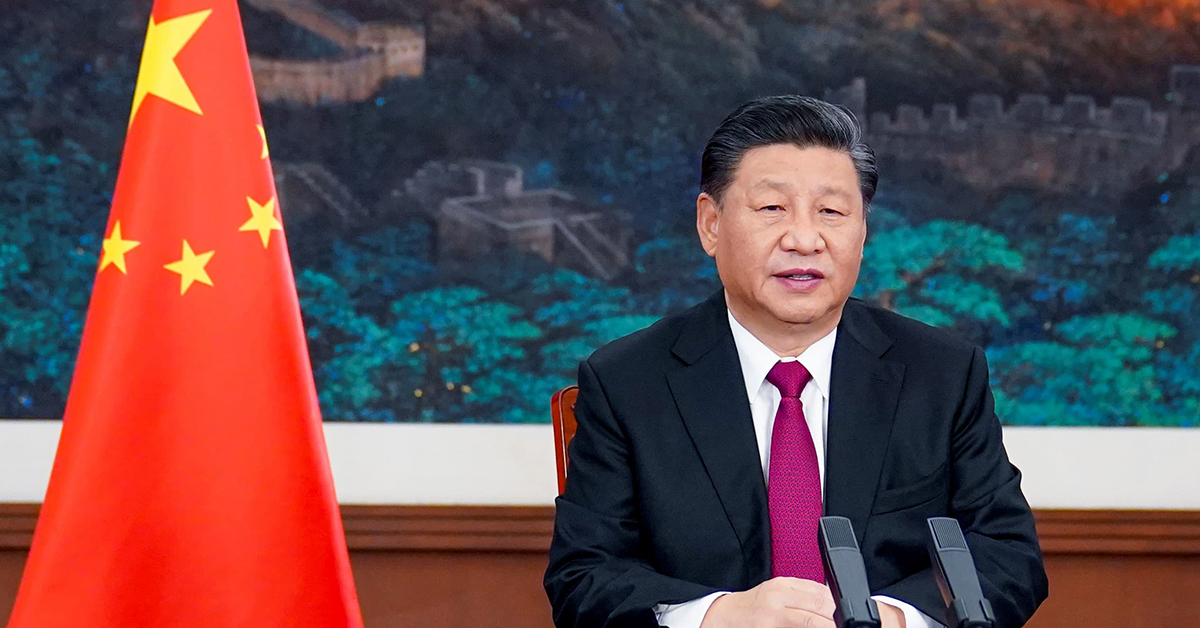- China’s Covid policy should be assessed in the context of China’s own economic structure and policy planning which differs substantially from the rest of the world.
- Medical studies are beginning to reveal the long-term economic and health costs arising from the latent effects of COVID-19. These could hold particularly severe implications for China, which has a much larger population and a weaker healthcare infrastructure in comparison to Western countries.
- China might not have many choices when it comes to implementing an optimal COVID-19 policy. However, implementation could be meaningfully improved to maximise the utility of the supportive measures the government has put in place as mobility of goods and people is key to their efficiency.
In light of the lockdowns implemented in large Chinese cities like Shanghai, Shenzhen and more recently Chengdu and its 21 million residents, international commentators have overwhelmingly viewed China’s “Zero-COVID” policy from a critical perspective, particularly in the context of most developed economies having decided to “live with Covid”. This is best illustrated by the Head of the IMF, Kristalina Georgieva, who stated that Beijing should reassess the use of lockdowns to limit the spread of the highly contagious Omicron variant since it became clear the harm to human health was less severe than the Delta variant. However, levelling criticism against China’s COVID-19 policy without offering alternative solutions through an objective assessment of China’s economic and demographic circumstances is not constructive.
China’s Covid policy should be assessed in the context of China’s own economic structure and policy planning which differs substantially from the rest of the world. The embedded long-term focus of economic policies implemented through the 5-10 years plans implies that existing policies in China might be better assessed through a long-term lens. Socialism and economic development with Chinese characteristics are principles that the government has repeatedly emphasized as a foundation of their economic framework and development. It is the basis of the policies that have been implemented to develop the economic structure and improve substantially the socio-economic environment of the Chinese people over the past 20 years. Analyzing Chinese policies outside of their political and cultural context makes little or no sense.
The hidden costs of long COVID
A poll conducted in March 2022 by Axios-Ipsos found that 66% of Americans believed Covid-19 poses little or no risk. Yet in the context of the large number of medical studies that have now been published, the probability that this is indeed the case is very low. There is a growing quantity of research on the long-term effects that Covid might induce in affected individuals – generally described as “Long Covid”. The medical literature seems to indicate that long term effects of Covid are far from negligible and the proportion of the affected population might be significant. As a result, it may be misleading to consider the number of deaths as a comprehensive indicator of severity of the disease.
The UK ONS reported that as of March 5th 2022, “an estimated 1.7m people living in private households in the UK (2.7% of the population) were experiencing self-reported long COVID. Long COVID symptoms adversely affected the day-to-day activities of 1.1m people (67% of those with self-reported long COVID).” In the US, the latest CDC data point to as much as 20% of the patients developing long Covid, while children are showing increasing numbers of medical issues after being exposed to Covid.
However, it is important to note that a significant percentage of the published research was based on unvaccinated patients. Latest publications seem to demonstrate that being vaccinated greatly decreases the probability of having significant negative health outcomes and suffer from long lasting Covid effects. But it does not reduce the risk to zero.
Moreover, from China’s perspective the long-term effects of Covid may present significant economic risks.
The US GAO published a report stating that “long COVID can have serious impacts. Some individuals have reported a need to adjust their work hours or stop working altogether due to chronic fatigue or cognitive impairment. One study of nearly 4,000 long COVID patients found that 45% reduced their work hours”. They add that “Studies in the U.S. estimate that 10 to 30% of COVID-19 survivors develop long COVID. If so, 7.7m to 23m people in the U.S. may have developed long COVID as of February 2022.”
In January 2022, the Brookings Institution conducted a meta-analysis to suggest that long COVID may be responsible for over 1m workers being out of the labor force at any given time”. The UK ONS reported that as of March 5th 2022, “an estimated 1.7m people living in private households in the UK (2.7% of the population) were experiencing self-reported long COVID. Long COVID symptoms adversely affected the day-to-day activities of 1.1m people (67% of those with self-reported long COVID).” The US latest CDC data point to as much as 20% of the patients developing long Covid, while children are showing increasing numbers of medical issues after being exposed to Covid.
Finally, a new study demonstrated that Covid-19 reinfection “adds non-trivial risks of all-cause mortality, hospitalization, and adverse health outcomes” by a factor of as much as 2.3x for cardiovascular disorders after the first reinfection. The authors estimate that the higher the number of reinfections, the broader and more severe the negative health effects are, irrespective of the vaccination status.
Economic Cost
The economic burden of sickness on societies is already very substantial. Whether it is absenteeism or presenteeism, numerous studies have demonstrated their cost to companies and the economy as a whole. In the UK, the estimated cost of absenteeism due to mental health reasons ranges between £14bn to £26bn/year. The Harvard Business Review estimated the cost of presenteeism in the US to be approximately $117bn per year in 2004. In the UK, the Centre for Economics and Business research estimated that the cost of absenteeism related to COVID-19 in January-February 2022 to be between £10.2bn and £35bn.
Additionally, as Covid might potentially damage a fairly large spectrum of organs depending on its severity and the health condition of the patient, the treatment for chronic medical conditions resulting from long Covid may also prove costly. The total cost of diagnosed diabetes in 2017 is $327bn, including $237bn in direct medical costs and $90bn in reduced productivity. The US CDC estimated the cost of heart diseases to be at $363bn from 2016 to 2017. A US study estimated that the total cost of asthma in the US amounted to $81.9bn in 2013 based on 22.3m affected people.
Diseases are not free of cost to the economy, even if the patient recovers. Long term costs arising from the latent effects of a particular disease would be substantial for any country, but this is particularly the case when considering the implications for a large population like China’s.
The China Case
Although more than 88% of the population in China has been vaccinated and more than 50% received a booster shot, approximately 308m people are yet to be fully vaccinated. Vaccination rates are disproportionately lower amongst the older population, in part due to the fact that China’s elderly tend to prefer traditional Chinese medicine over modern medical treatment.
Because of its large population, the cost of managing an uncontrolled pandemic is exponential for China. At the peak of infections, the US had more than 800,000 cases a day. This would translate into a staggering 3.4m cases a day in China. Considering that China has an estimated 4.3 intensive care beds per 100,000 people, far lower than in developed countries, it is easy to understand how quickly the system would be overwhelmed and the number of deaths would spiral out of control since proper treatment of patients has been a key factor to reduce the death rate in the US and Europe for severe cases (2-4% of the infected patients).
In the case of long Covid, taking 2.7% of the population as the reference number based on the UK government study, that would translate into 37.8m people in China. Using the grimmer data from the Solve Covid Initiative based on the US, that number would balloon to a staggering 95m to 186m people. The economic burden of widespread long Covid would be astronomical for China, and put a significant strain on the healthcare system.
Considering the points made above and the various examples provided, it appears that the dynamic “Zero-COVID” policy might be the only option available to Chinese policy makers from a long-term economic policy standpoint.
One could argue that a similar policy (albeit informal) might already be in place for Influenza as the prevalence rate is 81/100,000 in China vs. 10,600/100,000 in the US, saving considerable money to the Chinese healthcare system.
However, an article published in April 2022 estimated that “imposing full-scale lockdown on the four largest cities (Beijing, Guangzhou, Shanghai and Shenzhen) for one month would reduce the national real GDP by 8.6%, of which 11% is contributed by the spill-over effects.” As a result, although Zero-COVID might make sense from a long-term perspective, the management and efficiency of lock-downs must be improved to minimize the short-term economic impact.
Conclusion
Considering the risk of long-term health effects on a non-negligeable percentage of the population, from the perspective of the Chinese government it appears that a “Zero-COVID policy” is most likely the only viable option. Long Covid has the potential to inflict a staggering economic financial burden on China if the pandemic was not kept under control.
The implementation of Zero-COVID could be improved substantially by using Hong Kong’s experience as a case study, where a combination of self-testing, home isolation and targeted small quick lock-downs have helped bring the spike in cases under control, while minimizing the effect on the everyday life of the population. Mobility of population and goods are critical factors to the Chinese economy and as a result a major component of maximizing the utility of any supportive economic measures the government might take.
In terms of assessing China’s “Zero-COVID policy”, it might be wise to wait a couple of years when the full spectrum of Covid health implications is known and the true economic cost of having so many infected people in the population can be properly estimated by each country. It is particularly relevant when most critics have not proposed any alternative strategy (other than “live with Covid”) that would address the specificities of the Chinese economy and its demography.
This article gives the views of the author, and not the position of the China Foresight Forum, LSE IDEAS, nor The London School of Economics and Political Science.
The blog image was generated using DALL-E.





